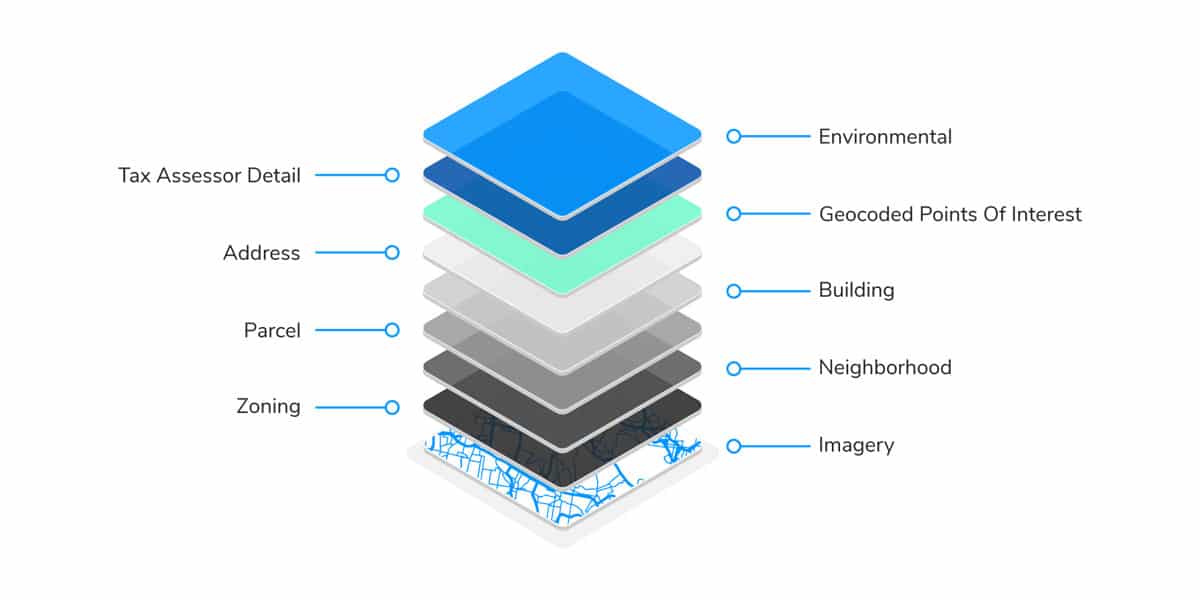Across industries and user segments, there has been an explosion in the amount of data that can be used for decision making and insights, and an increased desire to use data in a foundational way to gain sophisticated business intelligence. With the sheer amount of data from different sources, there comes complexities in the ability to normalize, structure, warehouse and operationalize data for any useful purpose – risking incomplete, fragmented or inaccurate results. This is where the need for curated and connected data comes into play, creating a founational data graph for master data management and flexibility in onboarding and using data.
LightBox, a leading Location Intelligence company, has tackled this with SmartFabric™, a property data product that connects thousands of spatial and non-spatial datasets comprehensive of parcelsboundaries, all structures, rich addressing for property and unit, tax and deed data, more, giving complete context of a property at a national scale. SmartFabric allows for immediate analysis and insight and also seamlessly enable the connection of other 3rd party or proptietary data.
LightBox has gained expertise curating, standardizing and normalizing Big Data with over 30 experince, and has launched the first national Zoning Data product in February, which provides a single, standardized source for parcel—level zoning data across the USA.
With the integration of LightBox’s geospatial data solutions, the SmartFabric software offers a thorough and highly precise mapping system that enables one to obtain exact details about property locations.
This includes Smart Fabric’s property data collection that has current and historical information, along with detailed property characteristics, addresses, and related geospatial data that have been gathered from tax records, maps, and developer plans. The environmental datasets they offer help in decision-making by highlighting risk profiles and critical information as identified by regulatory agencies at the federal, state, local, and tribal levels. Smart fabric also provides comprehensive demographic datasets that cover listings on crime, income, population density, and school ratings in neighborhoods.
Adding zoning data into SmartFabric lets users get detailed information about zoning regulations and restrictions in specific areas. This information can be used to assess the fit of a property for a build, including permitted use, setbacks, maximum height, density and more. Additionally, it includes a link to the jurisdiction for quick access if a deeper dive into a design guide is needed. SmartFabric with Zoning Data offers efficiencies to those across the commercial real estate eco-system to quickly identify properties favorable for their needs by giving them the data required to get to decision-making faster.
Available as a data feed, API, or SaaS application, SmartFabricenables users to combine data from disparate sources for deep insight and analysis to modeling and analytics.
ALSO READ: Real-time data impacting the real estate industry
Embracing a data mindset
The commercial real estate industry has long thrived on relationships which is how many investors have traditionally gained access to unique information. However, with increased availability and transparency of data, access to information and the use of data reduces subjectivity in the decision-making process.
Everyone knows there are inefficiencies in how the data is collected. What’s often lost is the subsequent changes to that data. The second you collect it, it is stale. Banks, buy-side acquisition teams and due diligence firms have the need to reconfirm things regularly as part of their process. This is work, time, etc., and you still have it stale right after.
Having a connected dataset that is “analysis ready” and event-based is foundational to driving immediate action
- Improve deal sourcing by analyzing broader datasets
- Allow for rigorous due diligence by digging deeper into current and potential property performance
- Predict performance based on changing trends across a range of variables
- Provides real-time tracking and integration of standardized information from multiple data sources.
Streamlining Site Selection
SmartFabric can be connected to third-party data such as demographic, points of interest, government data, and other market-related data points. This integration allows investors, builders, and developers to gain a more comprehensive understanding of the market, make more informed decisions about market location, and get a granular view of the property, streamlining their site selection and land acquisition workflows.
SmartFabric, for example, can be used to create heat maps that show the concentration of properties with amenities, such as proximity to public transportation or parking availability. This information can then identify investment opportunities in areas with high demand.
One can locate a particular address with SmartFabric and can basically connect to virtually any other address or georeferenced data element. Clients with their own data or additional data licensed from another party can connect it to the SmartFabric model, which provides a linkage between all the data elements. The geocoded points obtained via SmartFabric are of high-quality information and highly precise location.
By curating zoning data and connecting it to SmartFabric, customers bring together contrasting and disorganized jurisdictional datasets proficiently with access to the most complete collection of parcel-level zoning data on the market. Zoning data primarily helps customers understand land use for investment, planning and development.
Despite the current challenges the commercial real estate sector faces, such as increasing interest rates, the rising cost of capital, and declining loan originations, the industry is proactively taking steps to navigate these difficult times. By implementing efficiency measures in operations and developing a stronger sense of business strategy, industry participants demonstrate their resilience and determination to overcome obstacles. This adjustment period presents an opportunity for the commercial real estate sector to emerge more robust and resilient long-term.
(Sherrie Clevenger is the Vice President of Product Management, Lightbox. The views expressed in the article are the personal opinions of the author.)








